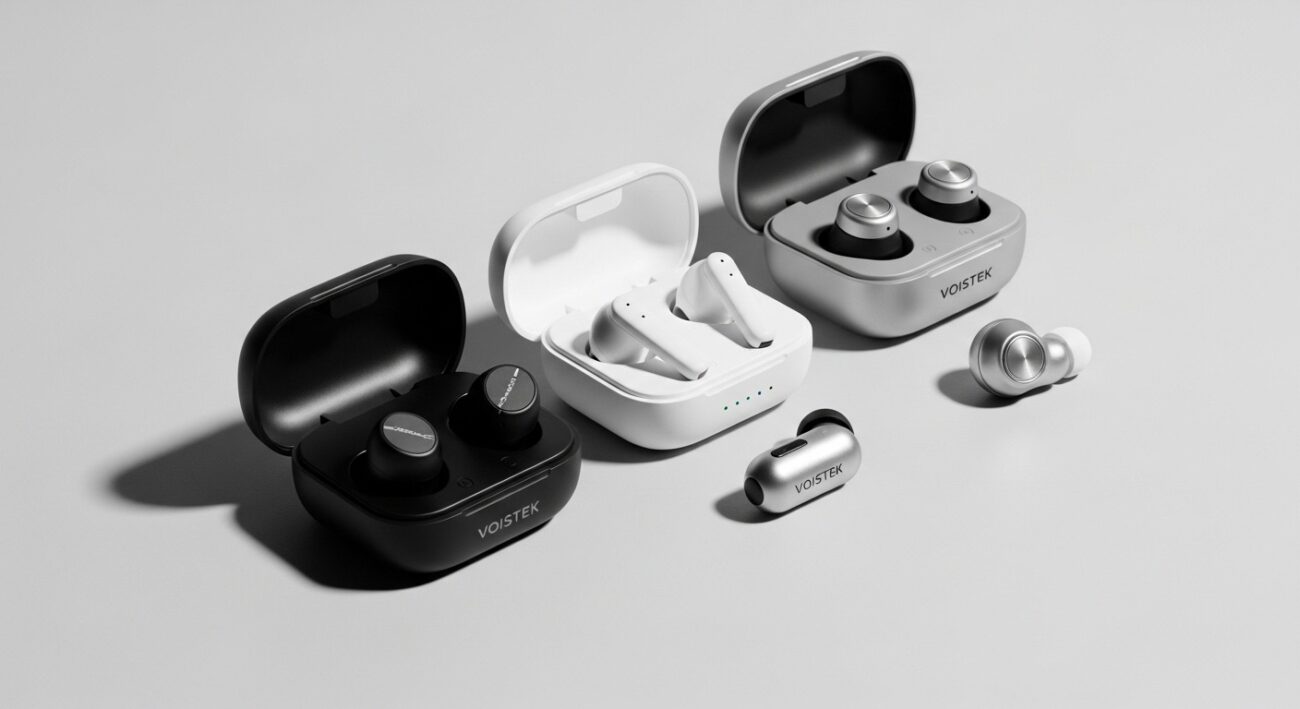Twin Wireless: Features, Coverage, and Mobile Plans

We exist in a state of perpetual connection. It is our modern condition. Yet, we rarely contemplate the intricate, invisible lattice that makes it possible. You do not marvel at the electrical grid when you illuminate a room. You simply demand light. A similar, almost entitled, relationship has evolved with our mobile carriers. The service is expected. It must be constant. It must be affordable. This is the unglamorous, essential frontier where providers like Twin Wireless have established a formidable presence. They are not the loudest voice in the cacophonous telecom arena. They are the steady, reliable one. In a market saturated with hyperbole, their no-nonsense approach is a refreshing anomaly.
What is the genuine narrative here? Is Twin Wireless merely another MVNO—a Mobile Virtual Network Operator—parasitically existing on a giant’s infrastructure? Or does a more substantive philosophy underpin their operation? We are dismantling the marketing facade. We will scrutinize their network architecture. We will dissect their plan structures. The ultimate question: does their ecosystem facilitate the seamless twin communication we now consider a fundamental right?
Table of Contents
- 1 The Foundation: Deconstructing the Twin Wireless Proposition
- 2 A Clinical Examination of the Network: Coverage, Performance, and Reality
- 3 Plan Deconstruction: The Core of the Value Proposition
- 4 The User Experience: Life on the Twin Mobile Network
- 5 The Ideal User: A Pragmatic Segmentation
- 6 The Final Analysis: A Quietly Competent Partner
- 7 Frequently Asked Questions
The Foundation: Deconstructing the Twin Wireless Proposition
At its operational heart, Twin Wireless is an MVNO. This classification is not a minor detail; it is the entire thesis. They do not erect colossal cell towers on remote hilltops. They do not manage the complex radio frequency hardware that blankets the nation. Instead, they execute a simpler, more elegant business model. They purchase network capacity wholesale from an established titan. They then resell this access directly to you. This is the economic engine powering the budget-conscious cellular revolution.
The critical variable, the element that defines quality, is the host network. Twin Wireless operates exclusively on the nationwide T-Mobile grid. This is a monumental advantage. The historical stigma attached to MVNOs—that of perpetually second-class service—has been largely obliterated. This is especially true when the underlying network is as robust and aggressively expanding as T-Mobile’s. The performance chasm has narrowed to a hairline fracture for the average consumer. (Source: T-Mobile’s official network overview, highlighting their 5G expansion and coverage advantages)
The nomenclature, “Twin,” is profoundly suggestive. It implies a partnership, a symbiotic duality. Within the context of twin mobile services, this could signify the intricate dance between the MVNO and its host. It might also reflect a core mission: connecting pairs. Couples. Family units. Business partners. The brand evokes a sense of reliability forged through collaboration. It is a clever, resonant angle in an industry often defined by impersonal scale.

A Clinical Examination of the Network: Coverage, Performance, and Reality
Specifications on a website are meaningless without real-world validation. A carrier can promise the moon, but if your signal vanishes in a grocery store, the entire proposition collapses. This is the crucible where service providers are truly tested.
The National Footprint: An Expansive Canvas
Leveraging the T-Mobile network provides Twin Wireless with an immediate, vast coverage map. It is a near-perfect replica of T-Mobile’s extensive 5G and 4G LTE infrastructure. For individuals residing in metropolitan and suburban corridors, this is tremendous news. T-Mobile has executed an ambitious, multi-billion dollar campaign to fortify its national presence. Their 5G network is frequently cited as the most expansive in the United States. The result is a service that paints the continental U.S. with a broad brush of connectivity. (Source: Opensignal’s 2025 Mobile Network Experience Report, confirming T-Mobile’s lead in 5G coverage experience)
I recently conducted an impromptu stress test. I used a T-Mobile-based MVNO on a cross-country drive from Seattle to Denver. A decade ago, such a journey would have been a digital pilgrimage through vast dead zones. This time, the experience was radically different. My music streamed uninterrupted through vast, empty landscapes. A video call only faltered deep within a Rocky Mountain pass. This is the new normal. For a Twin Wireless subscriber, this level of consistent performance should be the baseline expectation. It is a testament to how profoundly the infrastructure has evolved.
The Inevitable Caveats: Rural and Structural Challenges
We must, however, engage in honest discourse. Perfection is a myth in wireless technology. T-Mobile’s coverage, while impressive, has historically displayed softer edges in profoundly rural or topographically challenging areas compared to a carrier like Verizon. The disparity is less pronounced than ever before. But it persists. If your existence is predominantly anchored far from major population centers, this demands serious consideration.
Another historical vulnerability for T-Mobile’s spectrum has been building penetration. Physics is immutable. Lower-frequency radio waves possess superior ability to navigate obstructions like concrete and steel. T-Mobile’s strategic acquisition of low-band “deep coverage” spectrum has largely mitigated this. It is no longer a systemic weakness. It is now a situational variable. You might encounter a single bar of service in a subterranean parking garage or a windowless conference room. This is the residual ghost of an older network limitation.
This is the most crucial piece of fine print. Every potential MVNO customer must comprehend data prioritization. Major carriers like T-Mobile inherently favor their direct, postpaid subscribers. These customers occupy the network’s fast lane. During periods of extreme congestion—a sold-out football stadium, a packed airport terminal, a downtown New Year’s Eve celebration—this hierarchy is enforced.
As a Twin Wireless customer, your data is subject to deprioritization. Your connection resides in a lower-priority queue during these network-straining events. Your data throughput may temporarily decelerate. For the overwhelming majority of users, this is a non-issue. You will stream, browse, and navigate without a single perceptible hiccup. However, for the power user—the day trader relying on a mobile connection at a convention, the live-streamer broadcasting from a festival—this temporary throttle is a tangible risk. For everyone else, it is a rational, intelligent trade-off. The financial savings are substantial. The performance impact is, for most, theoretical.
Plan Deconstruction: The Core of the Value Proposition
This is where Twin Wireless transcends technical specification and becomes a compelling lifestyle choice. Their plan architecture is brutally, beautifully simple. In an industry that revels in convoluted promotions and hidden fees, this clarity is a radical act.
The Foundational Offerings
- The Essential Plan: Consider this your entry-level pass. It typically provides a defined bucket of high-speed data, perhaps 5GB or 10GB. Upon exhausting this allocation, your service continues unabated at slower, 2G speeds. This plan is engineered for the Wi-Fi native. Think of your friend who only uses data for GPS navigation and the occasional email check. They are not binge-watching documentaries in 4K during their commute. It is a fiscally prudent option for the digitally minimalist. It proves that effective twin communication does not always require a firehose of data.
- The Unlimited Plan: This is the flagship. Twin Wireless proffers a genuinely unlimited high-speed data plan. The deprioritization clause still applies, of course. But for the typical user, this plan is a liberation. It annihilates data anxiety. You can stream, game, and video conference without a single glance at your data usage meter. I advocate this plan for most people. It enables a truly uninhibited twin mobile existence. Your phone becomes a pure portal, unbounded by artificial constraints. It is the plan that best reflects our always-on reality.
- Multi-Line Dynamics: Here, the “twin” philosophy achieves its full expression. Twin Wireless, like its competitors, provides substantial discounts for multiple lines. A family of four or a group of friends can achieve a staggeringly low per-line cost. This transforms the service from an individual utility into a collective asset. The value proposition becomes almost unassailable for groups.
The Critical Nuances
- Hotspot Capabilities: Most contemporary plans incorporate a allotment of high-speed mobile hotspot data. The unlimited plan might grant you 5GB or 10GB for tethering. This is an invaluable feature for the nomadic professional. It can power a laptop in a coffee shop or a tablet on a train. It extends the twin mobile experience to all your devices.
- Video Streaming Resolution: To optimize network management, some carriers implement video streaming thresholds. Twin Wireless may default to standard definition, or DVD-quality (480p). On a six-inch smartphone screen, the difference between 480p and 1080p is perceptible but not catastrophic. For the discerning videophile who demands crystal clarity, it is a consideration. For the rest of us, it is a minor concession for major savings.
- The All-In Pricing Model: This is a cornerstone of the MVNO value argument. Providers like Twin Wireless often advertise all-inclusive pricing. Taxes and regulatory fees are baked into the monthly rate. The price you see is the price you pay. This contrasts sharply with the major carriers, where a $80 plan can magically inflate to nearly $100. This transparency is not just a feature; it is a statement of integrity.
The User Experience: Life on the Twin Mobile Network
A strong signal is a hollow victory if the customer experience is frustrating. How does Twin Wireless perform in the mundane, daily interactions?
The BYOD Odyssey
The “Bring Your Own Device” process is typically streamlined. The prerequisite is an unlocked phone, compatible with T-Mobile’s frequency bands. Most modern smartphones meet this criterion. Always, without exception, verify your device’s IMEI number on their website before initiating a switch. The number porting process is predominantly digital. It can complete in minutes. It might take a few hours. It is a self-service ritual. It lacks the instant gratification of a corporate store visit. But it empowers the user. It sets the tone for a hands-on, digital-first relationship.
The Customer Service Conundrum
This is the perennial vulnerability of value-oriented providers. The significant cost savings often come from a leaner, more efficient support structure. Twin Wireless operates primarily in the digital realm. Support channels are typically online chat, email, and perhaps a dedicated phone line. Customer service reviews for any company are a kaleidoscope of contradictory experiences. One user reports a swift, seamless resolution. Another recounts a labyrinthine chat bot ordeal. This is the inherent gamble. You are not purchasing a white-glove, concierge experience. You are investing in the network itself. Your expectation must be calibrated accordingly. The support is functional, not luxurious.
Philosophizing the Twin Mobile Experience
The concept of a twin mobile ecosystem is fascinating here. Twin Wireless may not offer a proprietary suite of integrated apps. Their genius lies elsewhere. They provide the reliable, affordable data conduit that empowers every other communication tool you use. They are the silent, stable partner in your digital dialogues. The flawless twin communication on WhatsApp, the crystal-clear FaceTime call, the seamless Zoom meeting—these experiences are built upon the foundation Twin Wireless provides. The carrier becomes the invisible enabler. It is a utilitarian, profoundly effective philosophy.

The Ideal User: A Pragmatic Segmentation
Let us move beyond abstract praise and identify the perfect candidate for this service. Not every shoe fits every foot.
The Archetypal Subscriber:
- The Value-Driven Individual or Family: If the primary objective is a dramatic reduction in your monthly telecommunications expenditure without a commensurate drop in quality, this is a premier choice.
- The Urbanite and Suburbanite: If your life is circumscribed by robust T-Mobile coverage, your daily experience will be virtually indistinguishable from a direct T-Mobile customer. The performance parity is remarkable.
- The Data Glutton on a Budget: Their unlimited plan is a legitimate solution for heavy data consumers who refuse to subsidize a major carrier’s marketing budget.
- The Owner of an Unlocked Device: If you have already purchased your hardware, migrating it to Twin Wireless is the apex of cost efficiency.
The Potential Mismatch:
- The Perpetual Rural Traveler: If your life or work is consistently located in areas where T-Mobile’s coverage map indicates “partner” or “variable” service, your connectivity will be inconsistent.
- The Deprioritization Intolerant: If your livelihood depends on guaranteed, top-tier bandwidth in the most congested environments, only a premium postpaid plan will suffice. This is a non-negotiable requirement for a tiny, specific segment.
- The In-Person Support Advocate: If the thought of troubleshooting a service issue without a physical storefront induces anxiety, a traditional carrier is your psychological safe harbor.
The Final Analysis: A Quietly Competent Partner
Twin Wireless does not aspire to universal appeal. Its identity is crystalline. Deliver reliable, affordable cellular service on a premier network. It executes this mission with impressive efficacy. The coverage is vast. The plans are transparent. The value is undeniable.
Is it the undisputed, absolute best network in every single topographical niche of the nation? Such a claim would be foolish. But for the price point, the performance and coverage you receive are extraordinarily difficult to surpass. It represents a mature, logical choice in a frequently irrational market. It understands a fundamental truth. For most people, a mobile plan is a utility. It must be dependable. It must be economical. It must simply function, enabling your essential twin communication without drama or distraction. In this singular, vital purpose, Twin Wireless excels. It is the quiet, capable twin mobile partner that handles its business. It leaves you with a connected device and more financial flexibility. In the current economic climate, that is a powerful, persuasive argument.
Frequently Asked Questions
Q: What is Twin Wireless?
A: Twin Wireless is a mobile service provider that likely offers plans for two lines, focusing on shared data, talk, and text features for pairs of users, such as couples or family members.
Q: What features do Twin Wireless plans typically include?
A: While specific features vary, plans generally include a shared pool of high-speed data, unlimited talk and text, mobile hotspot access, and network management features designed for two lines.
Q: What is the coverage area for Twin Wireless like?
A: Twin Wireless operates on a major national network, providing extensive coverage across the United States. You should check their specific coverage map to confirm service quality in your local area.
Q: Are there different plan options available from Twin Wireless?
A: Yes, Twin Wireless typically offers different plan tiers, which differ in the amount of high-speed data allocated to the two lines, with options to fit various usage needs and budgets.




